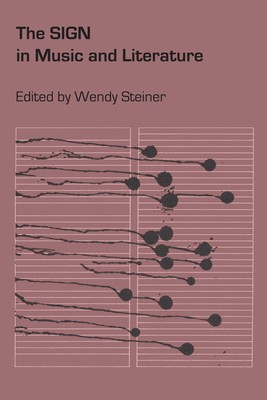
- We will send in 10–14 business days.
- Publisher: University of Texas Press
- ISBN-10: 0292769342
- ISBN-13: 9780292769342
- Format: 15.2 x 22.9 x 1.4 cm, softcover
- Language: English
- SAVE -10% with code: EXTRA
The Sign in Music and Literature (e-book) (used book) | bookbook.eu
Reviews
Description
The notion of semiotics as a universal language that can encompass any object of perception makes it the focus of a revolutionary field of inquiry, the semiotics of art. This volume represents a unique gathering of semiotic approaches to art: from Saussurian linguistics to transformational grammar, from Prague School aesthetics to Peircean pragmatism, from structuralism to poststructuralism. Though concerned specifically with the semiotics of music and literature, the essays reveal the breadth of semiotics' interdisciplinary appeal, involving specialists in musicology, ethnomusicology, jazz performance, literary criticism, poetics, aesthetics, rhetoric, linguistics, dance, and film. The diversity of authorial training and approach makes this collection a dramatic demonstration of the on-going debates in the field. In many ways the semiotics of art is the testing ground of sign theory as a whole, and work in this subject is as vital to the interests of theoretical semioticians as to students of the arts. It is to both these interests that this volume is addressed.
EXTRA 10 % discount with code: EXTRA
The promotion ends in 18d.00:53:55
The discount code is valid when purchasing from 10 €. Discounts do not stack.
- Publisher: University of Texas Press
- ISBN-10: 0292769342
- ISBN-13: 9780292769342
- Format: 15.2 x 22.9 x 1.4 cm, softcover
- Language: English English
The notion of semiotics as a universal language that can encompass any object of perception makes it the focus of a revolutionary field of inquiry, the semiotics of art. This volume represents a unique gathering of semiotic approaches to art: from Saussurian linguistics to transformational grammar, from Prague School aesthetics to Peircean pragmatism, from structuralism to poststructuralism. Though concerned specifically with the semiotics of music and literature, the essays reveal the breadth of semiotics' interdisciplinary appeal, involving specialists in musicology, ethnomusicology, jazz performance, literary criticism, poetics, aesthetics, rhetoric, linguistics, dance, and film. The diversity of authorial training and approach makes this collection a dramatic demonstration of the on-going debates in the field. In many ways the semiotics of art is the testing ground of sign theory as a whole, and work in this subject is as vital to the interests of theoretical semioticians as to students of the arts. It is to both these interests that this volume is addressed.


Reviews